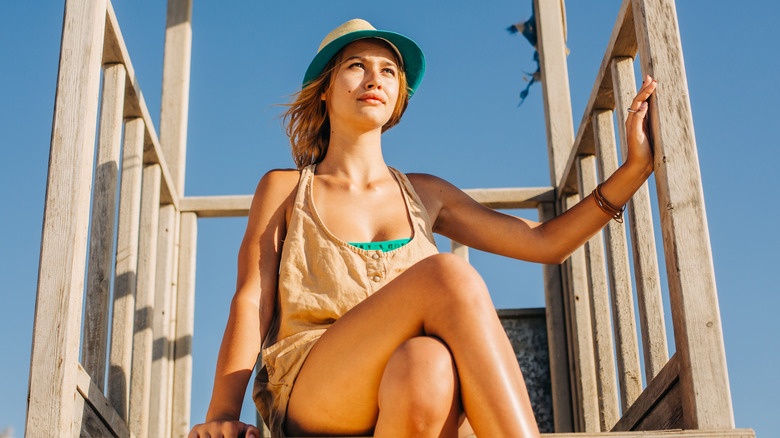Travel Guides Beach Vacations
Matt Berry
According to the United States Lifeguarding Association, rip currents are involved in over 80% of lifeguard rescues. While rip currents often make headlines, many beach-goers don’t really know how to spot them or understand how they work. In short, rip currents are narrow, fast-moving channels of water that start near the beach, cut through the surf, and extend offshore.
Rip currents aren’t undertows and don’t pull you underwater. However, these currents do pull you away from shore, which can lead unexpecting swimmers to panic. While we’ll also quickly cover how to safely escape from a rip current, the absolutely best way to safely swim at the beach is to avoid these hazards altogether.
Although they’re sometimes not the easiest to spot, there are a few telltale signs of rip currents. By surveying the beach and knowing how to spot them, you can avoid any unfortunate incidents during your next beach vacation.
Common signs of rip currents

vivanvu/Shutterstock
One of the reasons rip currents are so dangerous is that these currents create some of the calmest-looking areas for swimming. Since rip currents are channels that move through the surf zone, the area will typically look comparatively calm with no wave activity. In other words, rip currents will look deceptively safe even on a dangerous beach for swimming.
Depending on the strength of the rip current, the water may seem to be choppy or churning. However, compared to surrounding wave activity, the surf zone may still seem like an enticing place to swim. Rip current channels may also carry foam, seaweed, sediment, and other debris out to sea, which can help to spot them, and the water may appear darker. While these signs of a rip current may not be the easiest to spot, they’ll be easier to view from the dunes or other points of elevation.
How to stay safe in a rip current

Data collected by the United States Lifeguarding Association indicates that around 100 deaths can be attributed to rip currents annually. They can be deadly, so it’s important to know what to do if you find yourself in one. The first and most important thing to do is to stay calm. Most victims simply wear themselves out by panicking.
Second, go into float mode, collect yourself (don’t panic), and swim parallel to the shore toward breaking waves. Remember, rip currents are channels. Swimming directly back toward shore is comparable to swimming against a river’s current. By swimming parallel to escape the channel, you should be able to get out of the rip current and swim easily back to shore.
Before you pick a spot to set up your beach day, simply take a few minutes to survey the beach upon arrival. By carefully examining the surf zone for seemingly calmer areas, you should be able to avoid any rip currents. Also, it’s a good idea to swim on a lifeguarding beach, follow beach flags, and ask a lifeguard about the swimming conditions. Trust us, they’ll appreciate your consideration for beach safety.

